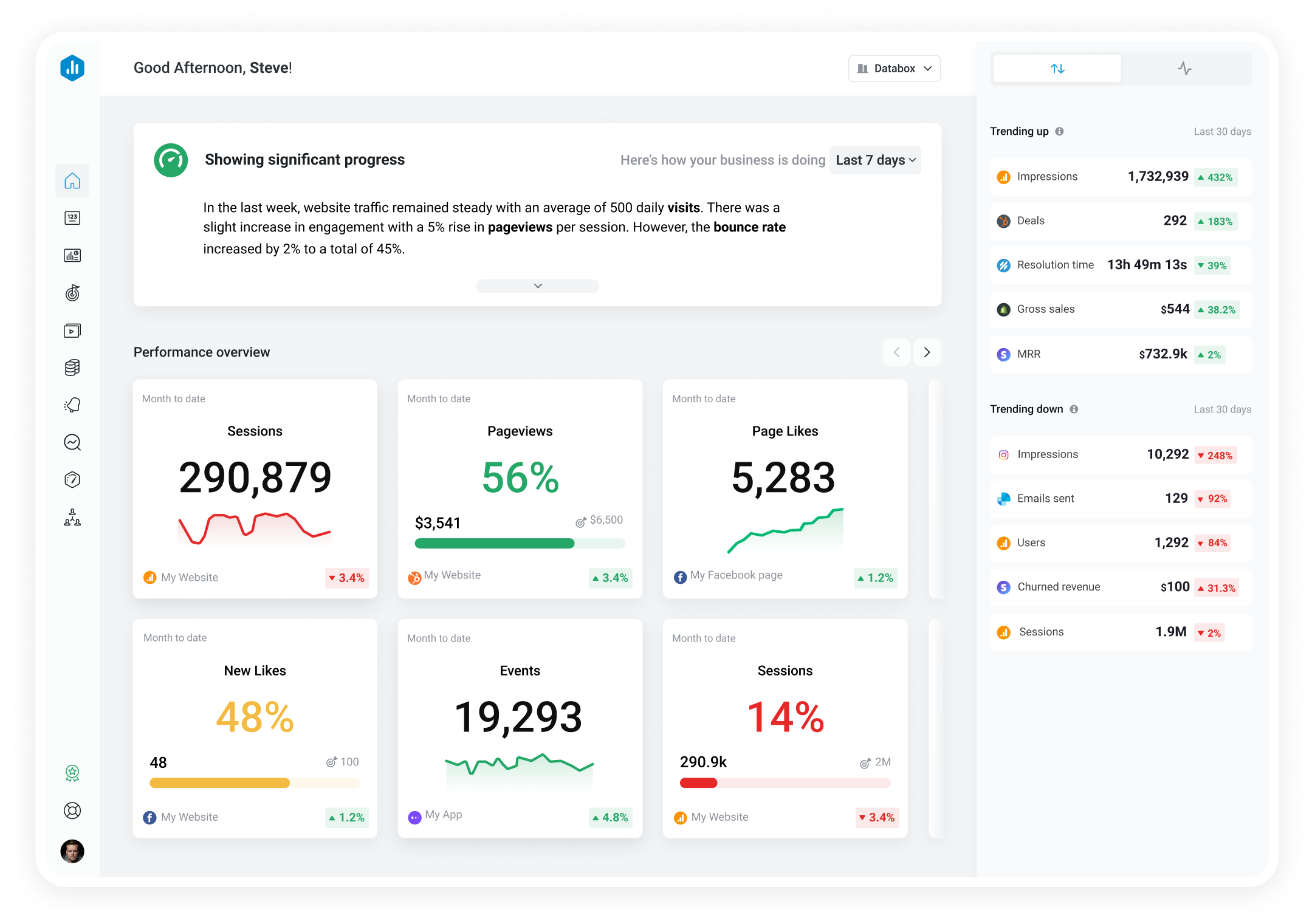Track all of your key business metrics from one screen
GET STARTED
 SendGrid
Spam Reports by Category
SendGrid
Spam Reports by Category The Spam reports by Category metric gives insights into the types of emails that are being reported as spam, such as content, frequency, or sender reputation. It helps identify areas for improvement in email strategies to reduce spam complaints and improve deliverability.
With Databox you can track all your metrics from various data sources in one place.

Used to show comparisons between values.
Databox is a business analytics software that allows you to track and visualize your most important metrics from any data source in one centralized platform.
To track Spam Reports by Category using Databox, follow these steps:
 Goals
Goals Scorecards
Scorecards Metric Digest
Metric Digest Metric Builder
Metric Builder Data Calculations
Data Calculations Performance Screen
Performance Screen